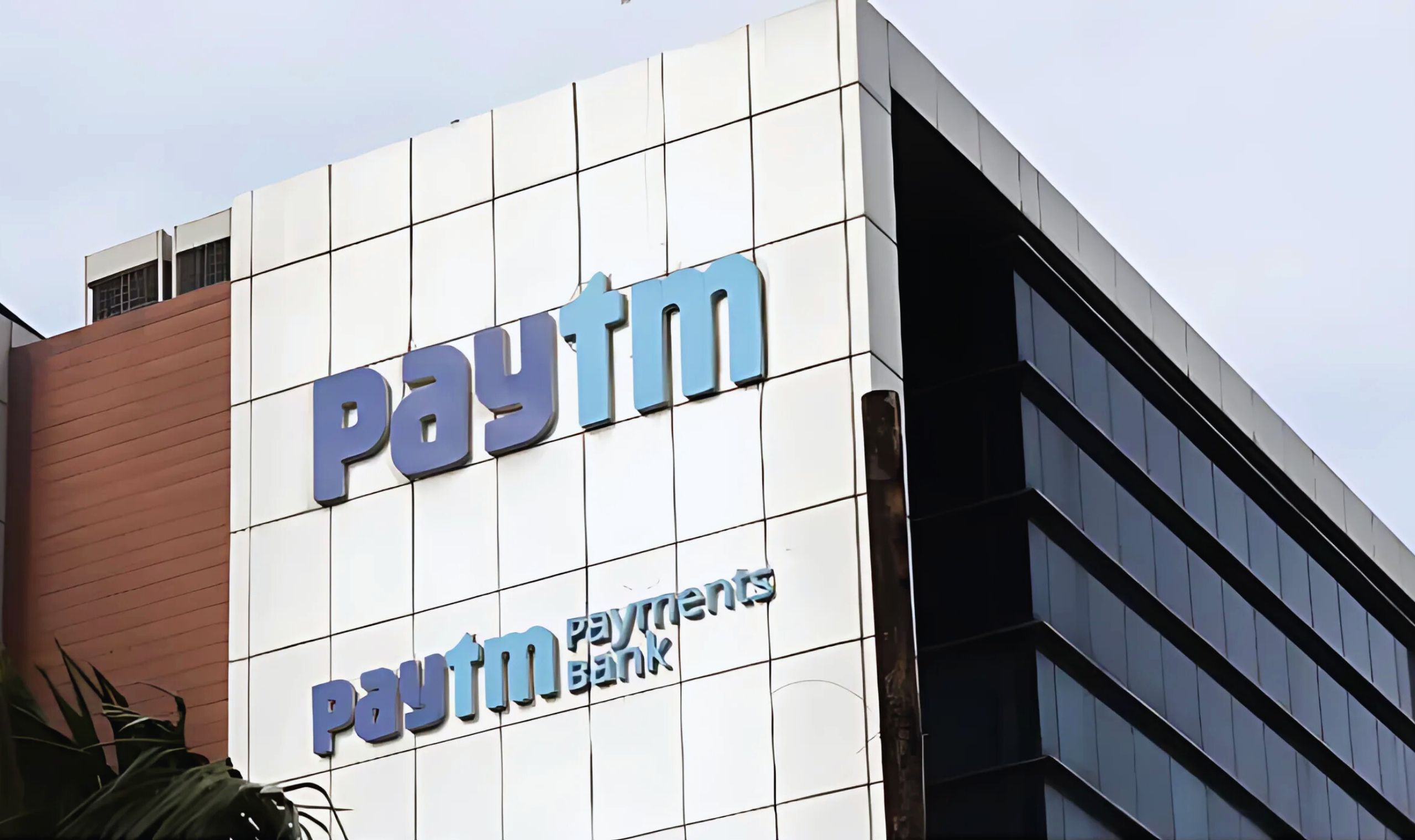Among all those tales in the world of stocks, the Paytm stock stands head and shoulders above the others – the extraordinary rise back from the depths for parent company One 97 Communications, owner of Paytm. The stock has increased significantly over the last two months, gaining investors as it rebounded considerably since its all-time low. Paytm’s stock has now risen to 13 months high, a 200% increase from its low record, despite several positive developments in the company. In the following article, we outline what drives this hike, the analyst upgrades affecting it, and how a fintech company is forging its way towards a much brighter future.
A Brief Overview of Paytm’s Recent Performance
On Thursday, Paytm’s stock gained almost 3.4%, touching ₹950 apiece. This marked the 13-month high for the stock. As the stock approaches the ₹1,000 mark, the optimism around the company’s future is increasing. This follows a series of positive updates and analyst upgrades, including a target price hike from global brokerage UBS. But what has led to this surge in Paytm’s stock price, and is it likely to continue its upward trajectory?
UBS’s Target Price Upgrade:
One of the most significant drivers behind the surge in Paytm’s stock price is the target price upgrade from UBS. The global brokerage firm raised its target price for Paytm from ₹490 to ₹1,000. Such massive growth reflects increasing confidence that Paytm’s stock has begun recovering and, further into the future, can pick up nicely.
UBS remained ‘neutral’ on the stock but said while optimism surrounds the stock, it largely depends on the company being able to generate sustainable revenue growth in the next growth phase.
UBS says Paytm has already captured a lot of cost optimization, and from now on, it needs to be in growth mode with the revenue. For fiscal year 2026 (FY26), Paytm’s revenue is expected to align with FY24 levels, and the company is likely to achieve adjusted EBITDA break-even by the fourth quarter of FY25. This indicates that while Paytm is on a positive trajectory, it must continue to deliver consistent growth to justify the higher target price.
The Role of Other Brokerages:
Other analysts are also supporting Paytm’s recovery with Bernstein and Citi giving the stock a positive outlook. Bernstein has increased its target for Paytm to ₹1,000 from ₹750, in light of its long-term view on the company’s prospects. Bernstein sees a strong upside in Paytm’s lending business and improving payment margins, which could nearly double its base-case estimates of EPS.
Citi also upgraded Paytm’s rating from ‘Sell’ to ‘Buy’ and raised its price target to ₹900. The upgrade came when there were a series of positives such as the National Payments Corporation of India (NPCI) approving the resumption of adding new UPI customers, thereby removing a key overhang on the stock which has been hanging around this one, and providing further confidence to the investors.
What is Going on with Paytm Recovery?
Stock prices have come to a remarkable recovery and touched nearly 200% increases over record lows. Of course, this has not come about overnight. Several important reasons, that have led the firm into recovery, have begun with the resolution of regulatory problems and an improvement in the business environment.
1. Regulatory Overhang Removal:
Probably, the most critical factor to get in the way of Paytm stock is that of regulatory scrutiny in the past few years. The RBI had restricted Paytm’s banking unit in January 2024 due to non-compliance issues. This led to a significant fall in the stock price of Paytm. However the company has been taking steps to clear these regulatory hurdles, and the latest approval from NPCI for resuming onboarding new UPI customers is a positive sign that regulatory hurdles are gradually being cleared.
2. Profitability and Business Expansion:
With a net profit of ₹928 crore in Q2FY25, Paytm stock was now reporting its first net profit since its listing back in 2021. Profit was majorly influenced by a one-time ₹1,345 crore benefit gained from selling its ticketing business to Zomato. Still, the ability to cut losses is a welcome sign. Investors hope that Paytm will be able to maintain such momentum through its core offerings of payments, lending, and financial services.
3. Diversification of Revenue Streams:
Paytm has diversified its business model, which has helped the company gain traction across various verticals. Although payments and mobile wallets form the core of Paytm’s business, the company has ventured into lending, insurance, and wealth management. These new verticals are expected to drive long-term growth and help mitigate the volatility that Paytm has faced in its core payments business.
4. Fintech Growth Opportunities:
The Indian fintech sector is one of the fastest-growing in the world, with an increasing shift towards digital payments, lending, and financial services. With the government pushing for a digital economy, Paytm is well-positioned to capture a significant share of this market. As the fintech landscape continues to evolve, Paytm stock diversified product offering and strong brand presence will be a key factor in its ability to stay ahead of the competition.
Market Recovery and Investor Sentiment: The movement of the stock price is greatly determined by market sentiment, which has helped Paytm rise with the improving sentiments of the overall market. In this regard, with rising investor confidence in the fintech sector and the potential of Paytm to get through regulatory hurdles, the stock price rises.
Paytm Stock: Challenges and Risks
While the recovery story of Paytm stock is encouraging, there are challenges ahead. Positive news notwithstanding, analysts caution that not all regulatory hurdles have been cleared. For instance, the Reserve Bank of India (RBI) has yet to give Paytm a license for payment aggregation. This is a critical service that allows businesses to accept and disburse payments online. So long as this issue is not sorted out, the future growth prospects of Paytm in certain areas of its business will be restricted.
The company’s recent profitability was also driven by a one-time gain from the sale of its ticketing business. Although this shows Paytm stock ability to monetize assets, the sustainability of profitability in the long term will depend on growth in its core business segments and the continued development of its lending operations.
Stock Performance and Market Sentiment
The market has surely responded well to Paytm stock recent performance and outlook going forward. The 200% rise from the all-time low testifies to the resilience of the company and the market’s faith in its long-term potential. However, Paytm is still down 51.81% from its all-time high of ₹1,955 per share, reflecting the challenges it has faced in the past, including regulatory issues and market volatility.
Despite the ups and downs, Paytm has shown good recovery potential, and as the company continues to resolve regulatory concerns, expand its business, and capture growth opportunities, the stock is expected to perform well in the long run.
Conclusion: Paytm’s Road Ahead
Paytm’s stock is on a positive trajectory, with analyst upgrades and good financial performance. The approval to resume onboarding new UPI customers, recent profitability, and growth in diversified business verticals are all positive factors surrounding the company. With the target price of major analysts, including UBS and Citi, revised upwards, Paytm seems to be on the right track for sustained growth.
However, the company is not without its challenges, particularly in terms of unresolved regulatory issues. Moving forward, Paytm’s ability to continue to address these concerns, expand its fintech services, and generate consistent revenue will be key to maintaining investor confidence and driving long-term stock performance.
As investors continue to watch Paytm closely, such a journey is a reminder of all of the complexity and also the opportunities within the Indian fintech sector. Until now, Paytm has shone bright, but much must be done to ensure it takes advantage of the country’s digital economy.















0 Comments